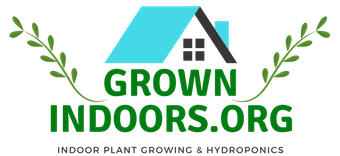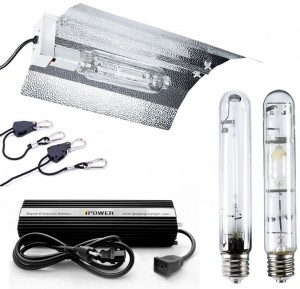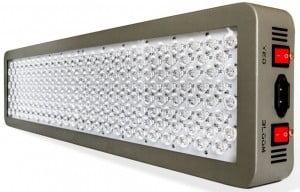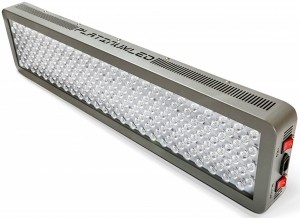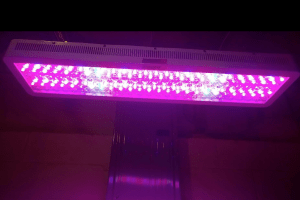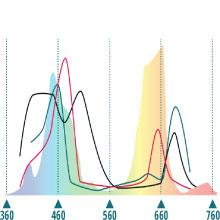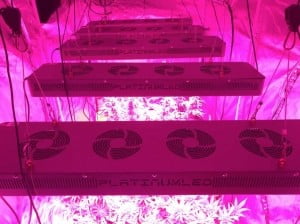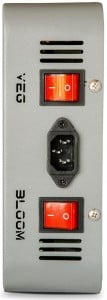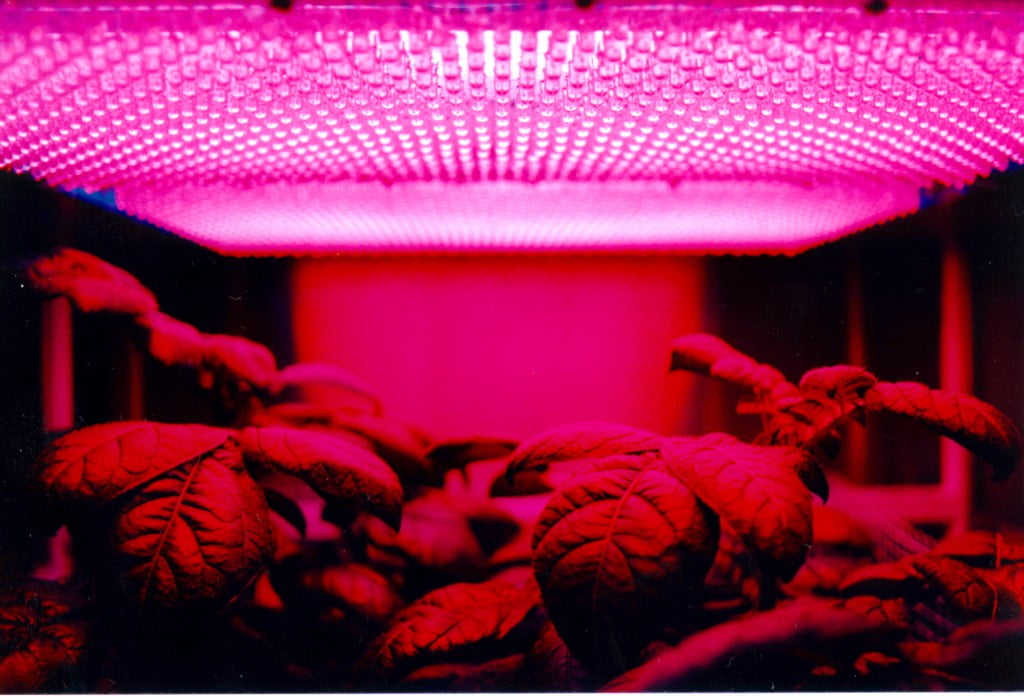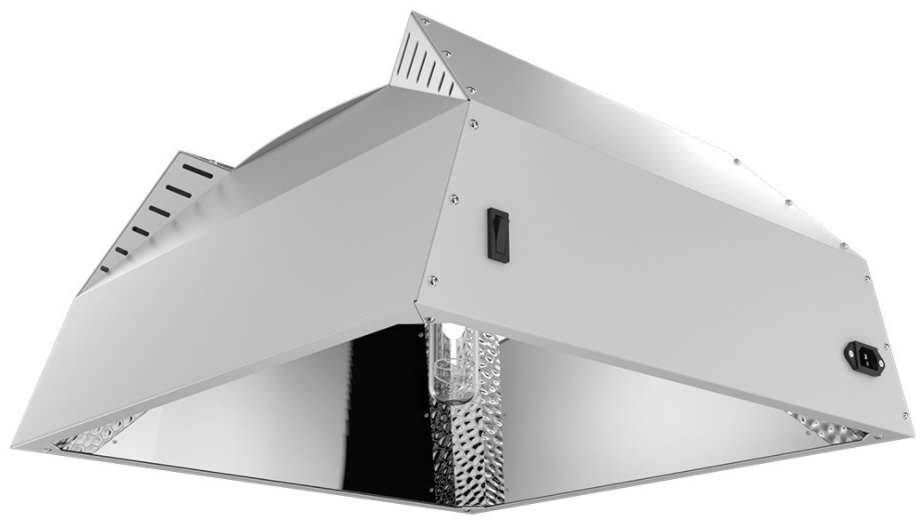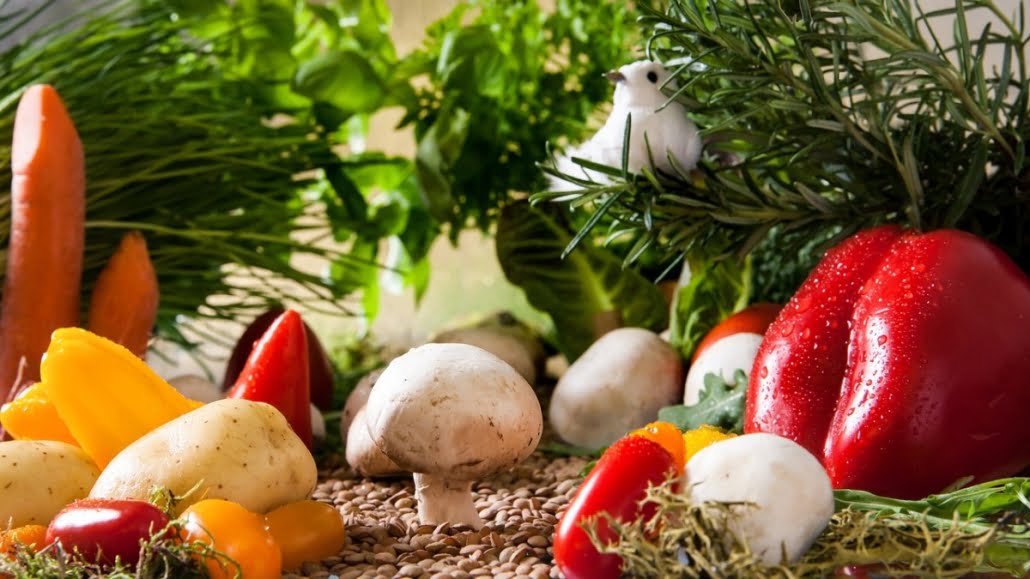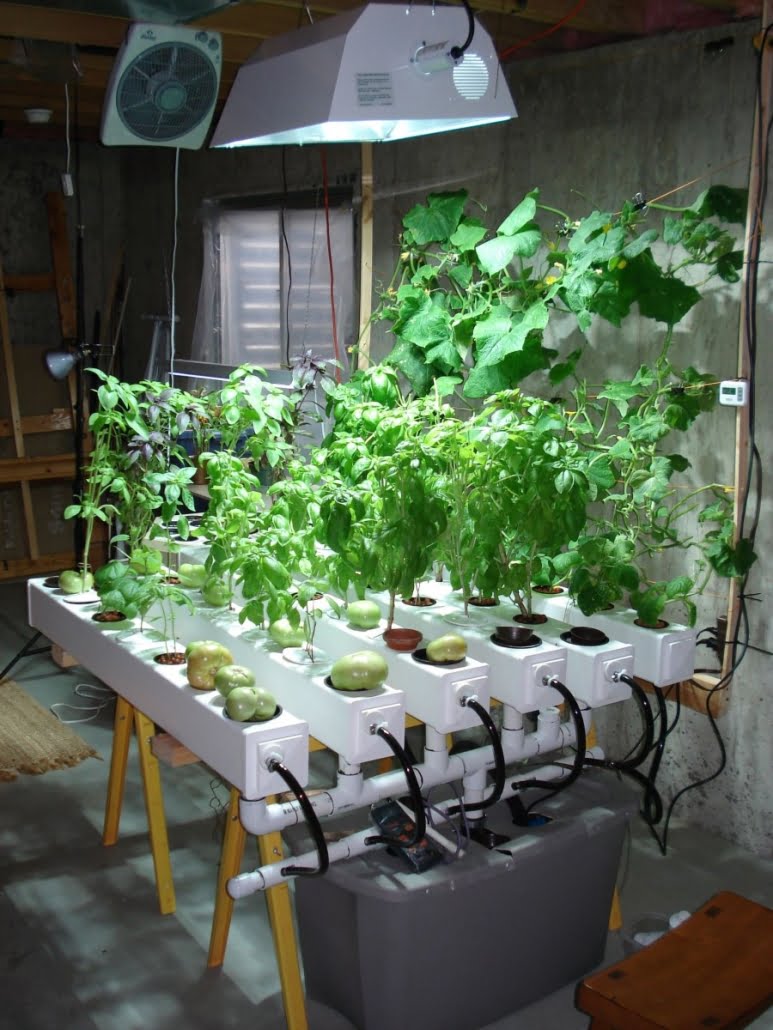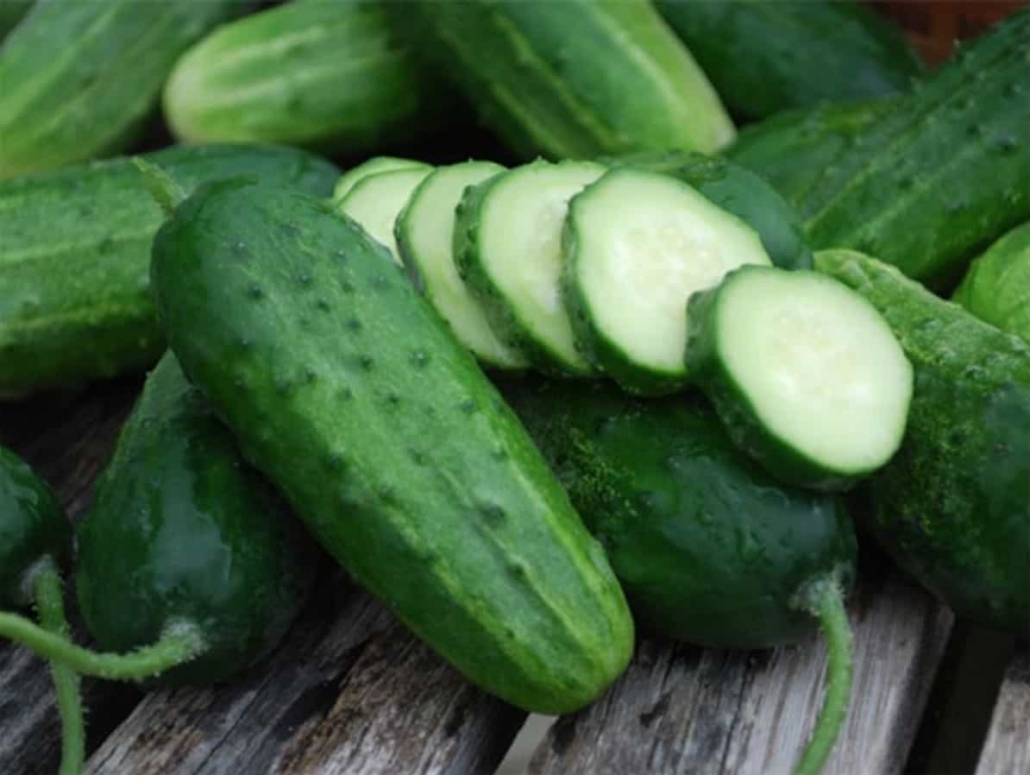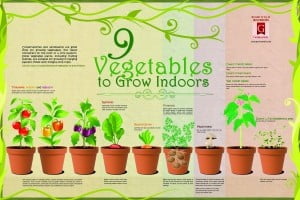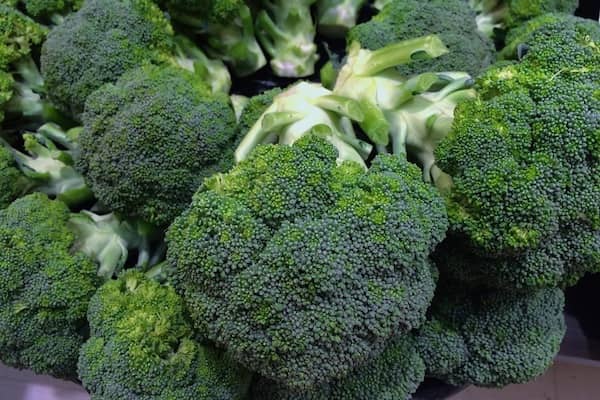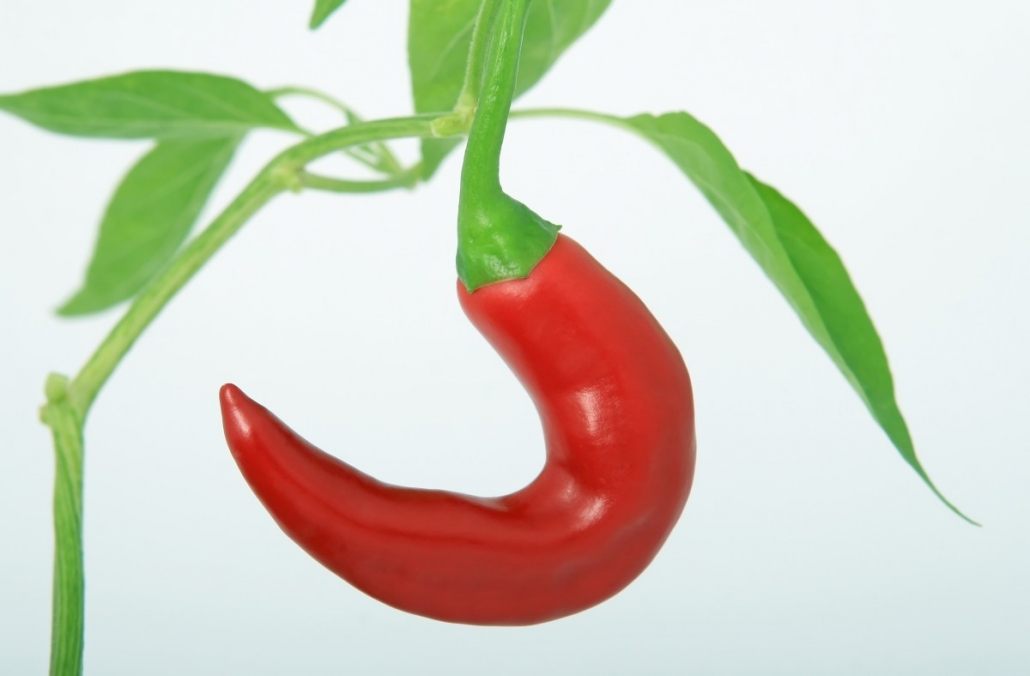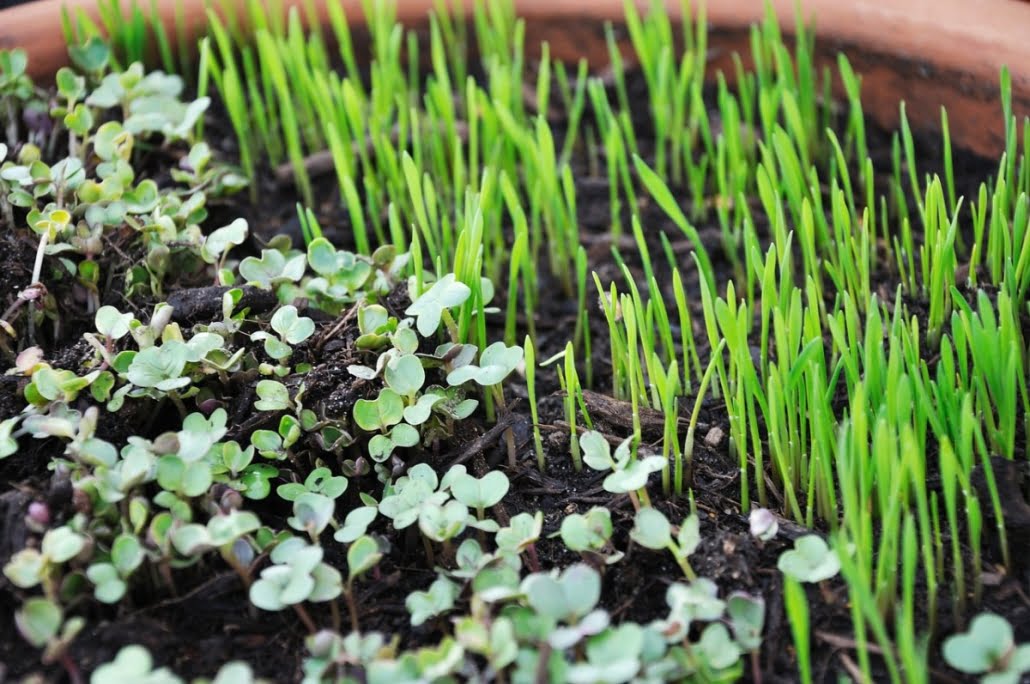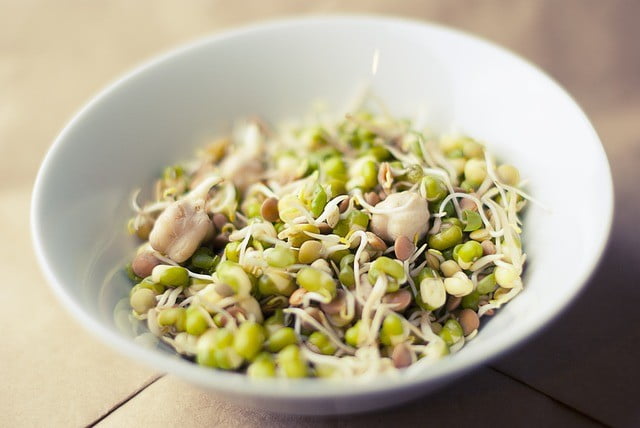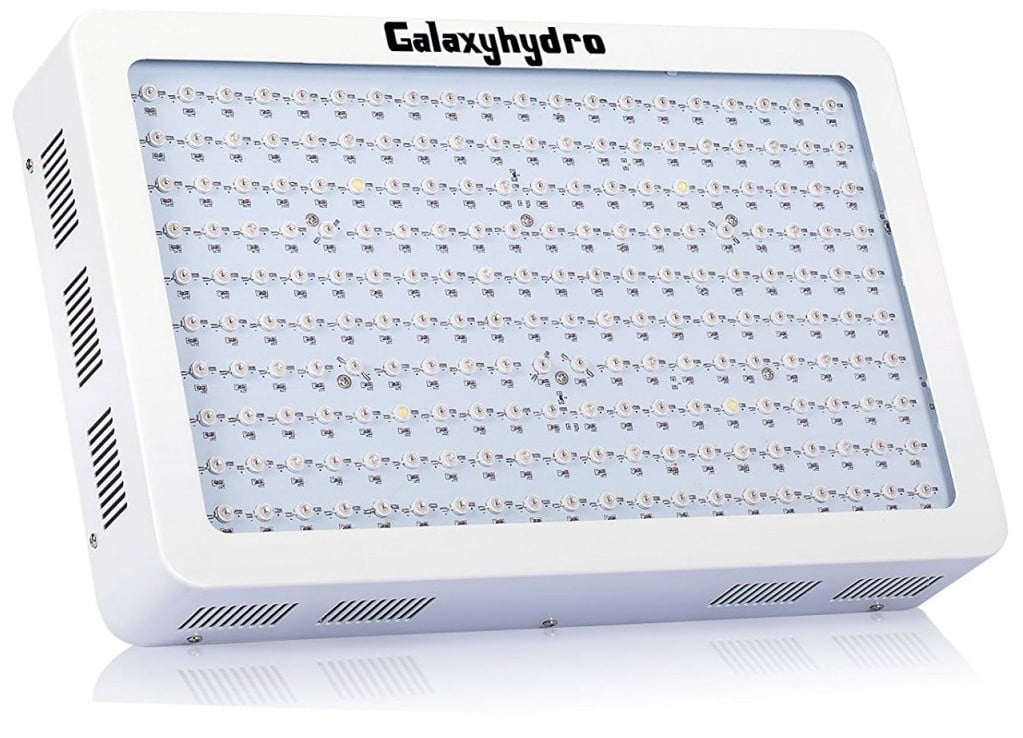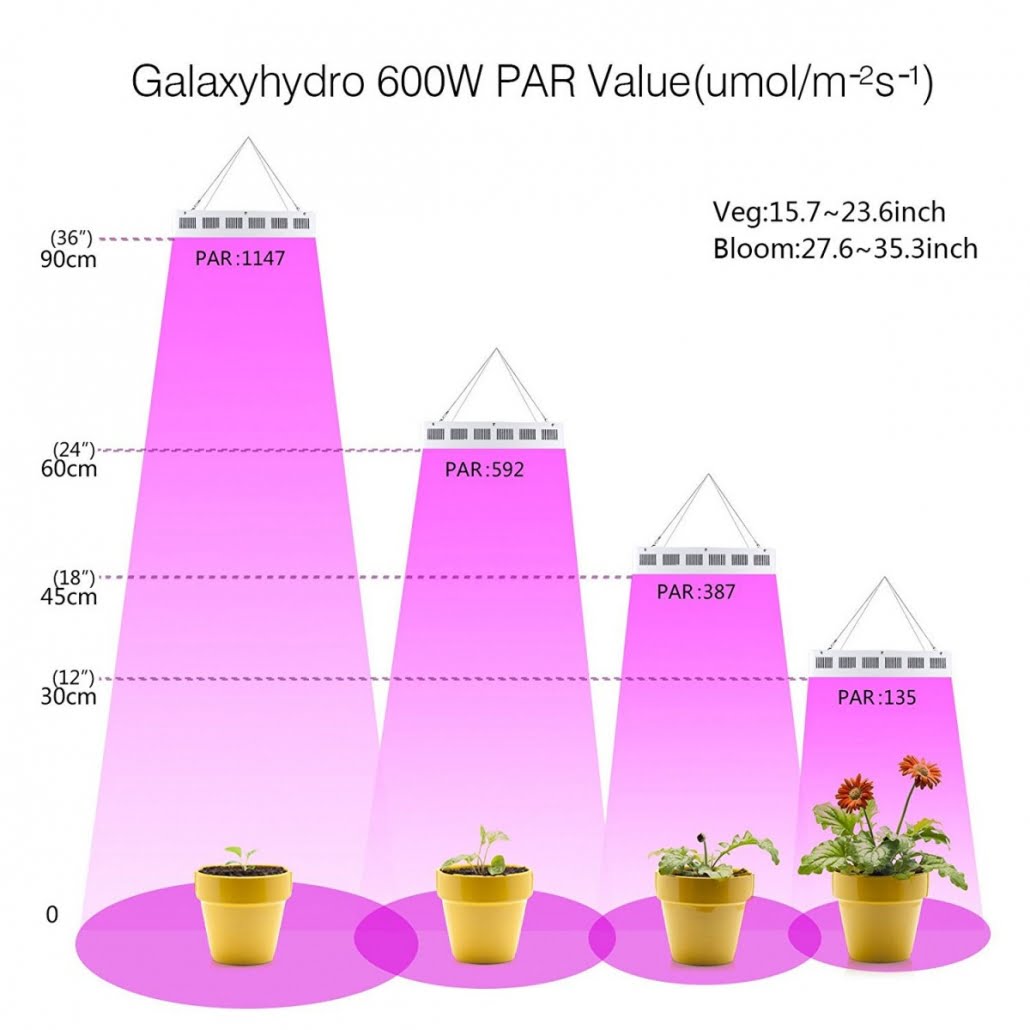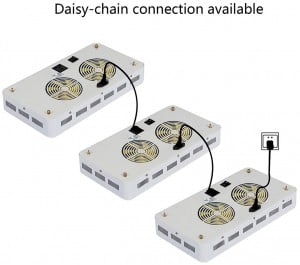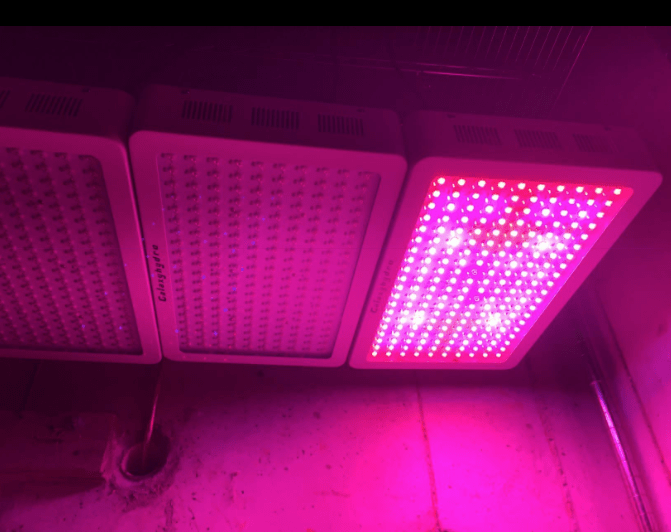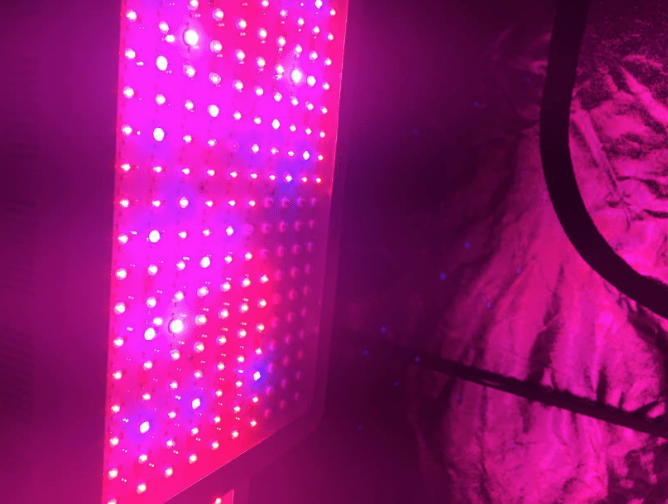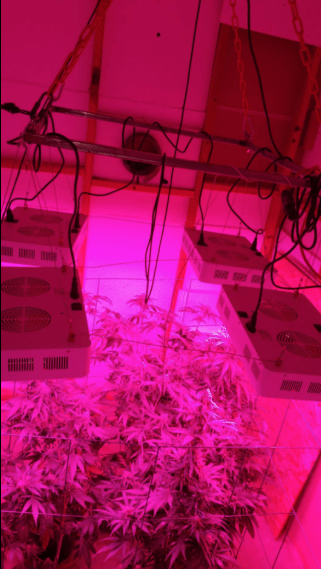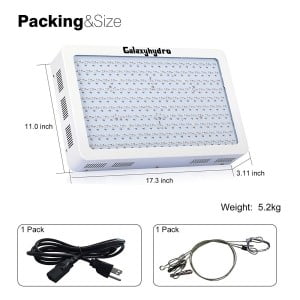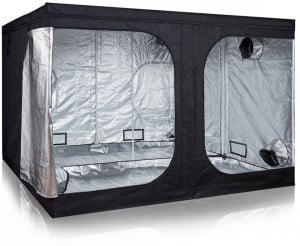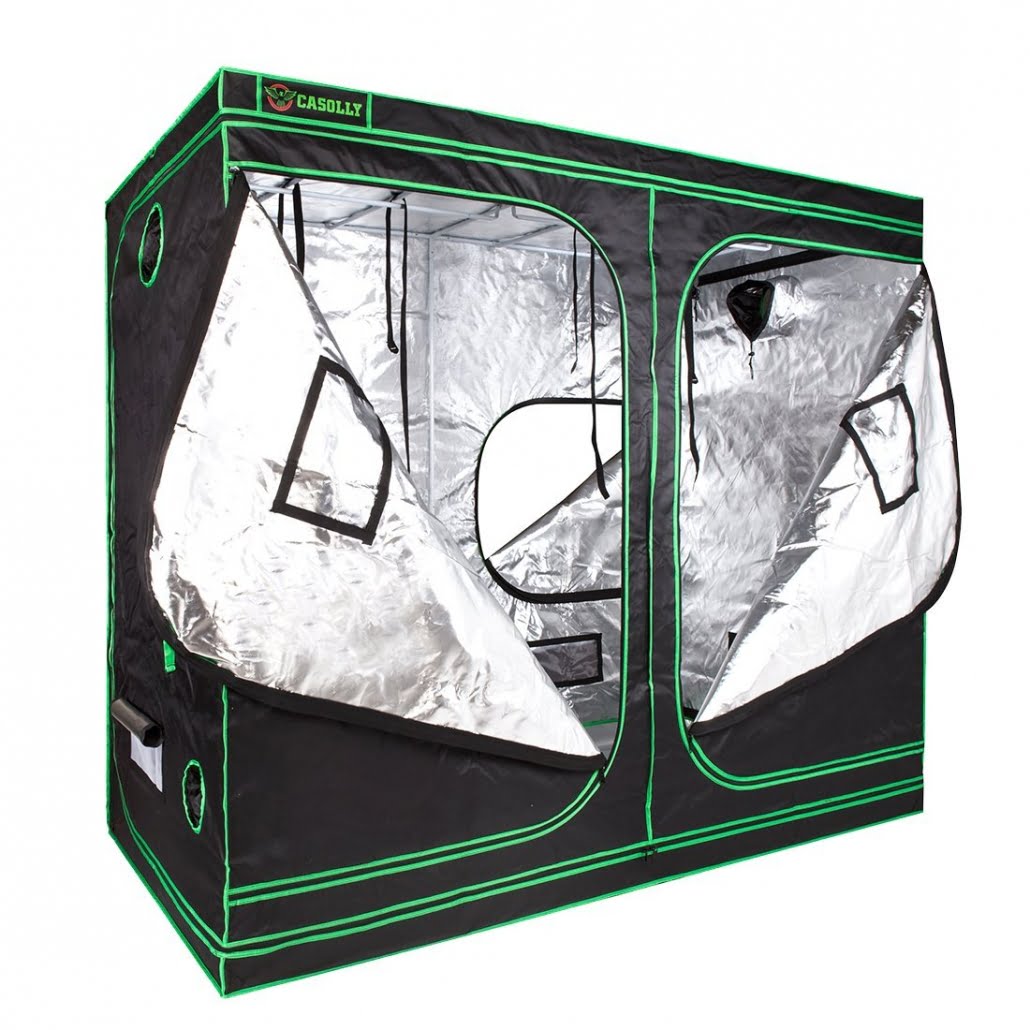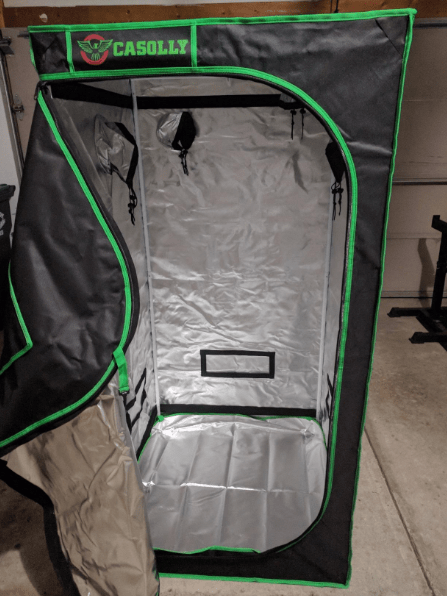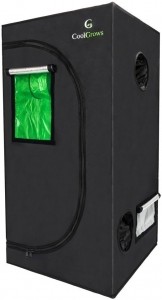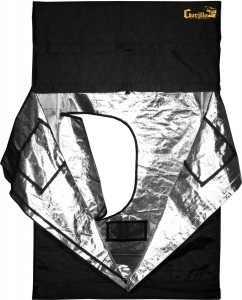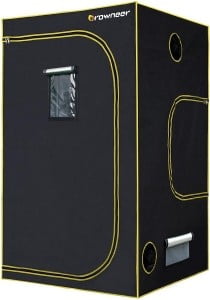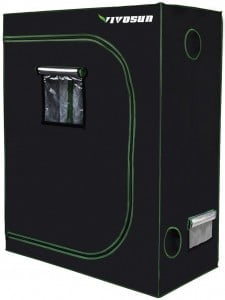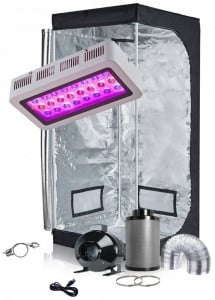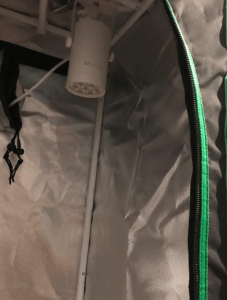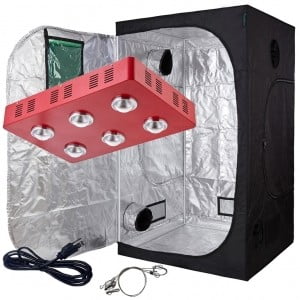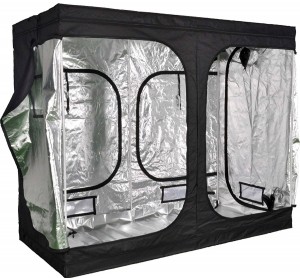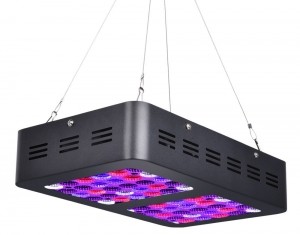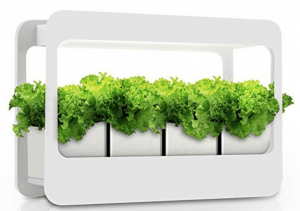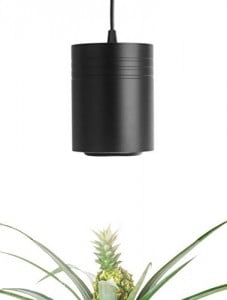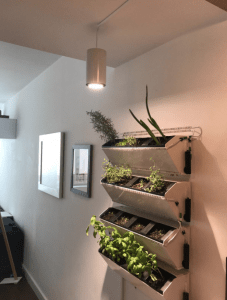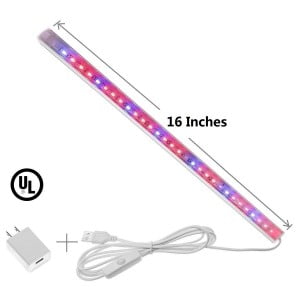A Detailed Look At The iPower 400 Watt HPS MH Digital Dimmable Grow Light System Kit
Over my years of experience in growing, I have realized that lighting is one of the most important factors for getting good quality and high yield from indoor growth. A vast variety of lighting options are available to people for providing the correct amount of light to their plants.
Modern equipment such as reflectors and ballasts can help in efficiently utilizing the energy while maintaining safety levels. Advanced systems can be adjusted to ensure that the plants remain in the correct temperature and get optimal levels of lighting.
Before we move on below is the current price and rating on Amazon.com
Features At A Glance
- 400W Digital Dimmable Electronic Ballast: Support 120V/240V Input; Dimmable Options: 50%, 75%, 100%; 8 Feet heavy-duty power cord included; Stable power output ensure flicker free light.
- 1 x 400W Super HPS Bulb 2100K; 1 x 400W MH Bulb 6000K; Optimized spectrum and high PAR (Photosynthetic Active Radiation) to promote healthy plant growth and soonest flourish.
- 1 x Pair of 8-ft adjustable Ratchet Clip Hanger Rope: hold up to 150 lbs.
- 19-inch Wing Reflector: up to 4′ x 4′ light coverage; Built-in 15 feet heavy duty lamp cord (UL Listed) with E39 Ceramic Mogul Socket and standard Hydroponic S-Plug; highly 95% reflective textured German aluminum maximizes the light reflected to the plants.
- CAUTION: This system will generate too much heat to be used in an enclosed area without ventilation. Adequate ventilation is required for all iPower grow light systems. We recommend the use of an iPower inline fan.
Best Lighting Option:
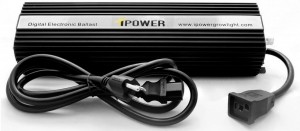 Ballasts are commonly employed for indoor gardening to install a large number of bulbs safely. The bulbs used have high intensity which can imitate sunlight to promote plant growth as required. The ballast controls the electric current which helps the lamps to function with higher efficiency resulting in lower energy bills.
Ballasts are commonly employed for indoor gardening to install a large number of bulbs safely. The bulbs used have high intensity which can imitate sunlight to promote plant growth as required. The ballast controls the electric current which helps the lamps to function with higher efficiency resulting in lower energy bills.
Ballasts can have different designs and types which can make it extremely hard for you to select the perfect one. However, I have noticed that most growers do not stick to the same type of plants (strain) for long periods of time which makes it extremely hard to predict what type of lighting the future batches may require.
After trying more than two dozen popular models by most recommended companies, I have found iPower’s HPS MH Grow Light System with 400 Watt power rating to be the best ballast for indoor growing.
Brand Trust:
The products from iPower come with a guarantee of high quality and advanced technology as the company has an experience of over 10 years and is among the leading grow light system manufacturers. Along with digital ballasts, iPower also provides super MH and HPS lamps along with LED and fluorescent lighting.
Their products can help indoor growers and gardeners for hobby or commercial purposes. Their equipment and tools can help in efficient climate control, hydroponic growth and irrigation for helping the plants to thrive in any type of indoor environment.
Advanced Technology:
iPower’s system comes with HID technology which helps in generating more lumens of light through the available energy. This helps in reducing the energy consumption drastically as HID is the most cost effective lighting solution available commercially.
The system features a balanced set of lights to create a spectrum which is absorbed by the chlorophylls easily while promoting more production of chlorophyll and regulating the life of plant.
Everything Within One Kit:
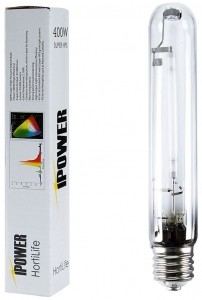 This system contains everything that you will need for setting up a lighting system indoors. You don’t need to mix fluorescent or extra LED bulbs which provide minimal benefits while costing twice or thrice as much. Since the entire kit has been designed and manufactured by iPower, the parts are highly compatible with each other and can be assembled easily.
This system contains everything that you will need for setting up a lighting system indoors. You don’t need to mix fluorescent or extra LED bulbs which provide minimal benefits while costing twice or thrice as much. Since the entire kit has been designed and manufactured by iPower, the parts are highly compatible with each other and can be assembled easily.
Although it is simple to connect and set up the iPower Grow Light System, I would advise you to refer the manual instructions carefully when using it for the first time. This will help in avoiding any mistakes while allowing you to know the vast range of functionalities offered by the system and adjusting it for best results. The kit comes with 5 main parts along with accessories:
1. Digitally Dimmable Ballast Of 400 Watts:
This electronic ballast supports input voltage of 120 or 240 Volts and can be operated at 50, 75 or 100 percent power for adjusting the light as required. The ballast claims to generate 30 percent more light as compared to magnetic ballasts and I noticed that my yield increased because of this.
It is extremely convenient to set up and adjust the ballast as it comes with a durable power cord and wired using S-Plug. The lamp also ignites quickly within 2 minutes once the bulbs are lighted while the high frequency output reduces power loss. The ballast can be programmed through a microchip and converts automatically between MH and HPS lights.
I also noticed that the stable voltage generated no flickers and the ballast was not damaged due commonly observed factors such as power surges, bulb fuses, short circuits or ignition failures.
A cooling fan and intelligent design further kept the ballast temperature low and allowed it to function for long periods continuously. It comes with a 2 year warranty period as well which is not bad and it’s pretty standard among other brands of ballasts on the market.
2. Wing Reflector Hood:
 The basic gull type reflector I use can also be employed for 250, 600 or 1000 watt MS/HPS light systems to cover an area of up to 4X4 square feet. The lightweight hood comes with an inbuilt lamp cord of 10 feet length and ceramic sockets.
The basic gull type reflector I use can also be employed for 250, 600 or 1000 watt MS/HPS light systems to cover an area of up to 4X4 square feet. The lightweight hood comes with an inbuilt lamp cord of 10 feet length and ceramic sockets.
The 0.4 mm thick reflective surface is made of German aluminum which has been textured to reflect 95 percent of light and reliably helps to intensify the light while enlarging the lighting area. The mounting bracket for reflector is made using galvanized steel which makes it extremely sturdy and strong.
3. HPS Bulb Of 400 Watts:
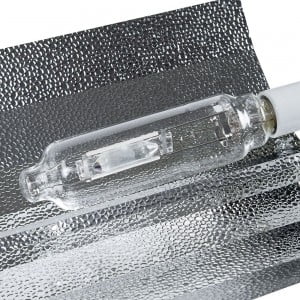 With a capacity of of 55,000 lumens and a color temperature of 2100 Kelvin(K), this high pressure sodium bulb (HPS) boasts having a lifespan of 32,000 hours while featuring a 1 year warranty. They are also compatible with magnetic ballasts and maintain more than 90 percent of initial lighting capacity even after working for 6500 hours.
With a capacity of of 55,000 lumens and a color temperature of 2100 Kelvin(K), this high pressure sodium bulb (HPS) boasts having a lifespan of 32,000 hours while featuring a 1 year warranty. They are also compatible with magnetic ballasts and maintain more than 90 percent of initial lighting capacity even after working for 6500 hours.
They are designed specifically for indoor growing proved to be better for promoting the growth of flowers and fruiting process when I compared them to other HPS grow lights and bulbs.
4. MH Bulb Of 400 Watts:
The metal halide (MH) bulb has a lighting capacity of 36,000 lumens with a lengthy lifespan of 12,000 hours and boasts a color temperature of 6000 Kelvin(K).
They are also compatible with magnetic ballasts and maintain more than 90 percent capacity even after running for 5000 hours. They also feature a one year warranty and helped my plants by speeding up their growth process.
5. Heavy Duty Clip Hanger Adjustable Rope:
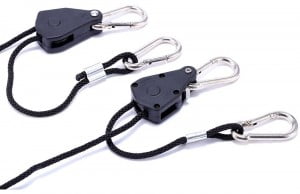 I found this rope to be extremely helpful while adjusting the height and position of the lighting system. This rope has ample length of 8 feet and a thickness of 0.125 inches which helps it to support up to 150 pounds of weight although I have never needed it for supporting more than 100-110 pounds.
I found this rope to be extremely helpful while adjusting the height and position of the lighting system. This rope has ample length of 8 feet and a thickness of 0.125 inches which helps it to support up to 150 pounds of weight although I have never needed it for supporting more than 100-110 pounds.
It comes with 4 carabiner clips which further increase the ease of usage. The rope is made using braided polypropylene, hooks are made of zinc plated steel and internal gears contain 100 percent stainless steel making it highly resistant to tear and rust.
I have used this fully adjustable rope with locking facility for a variety purposes but it has never given me any problems.
Other Models Of This Kit Available
iPower creates other Models of this kit. The main difference between the models is the wattage of the bulbs. I haven’t personally used them myself, because I’ve only used the 400 watt version, but I’ve listed the other models below:
iPower 600 Watt HPS Digital Dimmable Grow Light System Kits Wing Reflector Set
iPower 1000 Watt HPS Digital Dimmable Grow Light System Kits Wing Reflector Set
Overall/Final Thoughts
As I’ve said at the beginning I’ve tried quite a few ballasts, but out of all of them I’ve been impressed and pleased more with the iPower ballasts. Added to the fact that this ballast comes in a complete kit with a reflector hood and all at a competitive price just completes the sweet deal. You certainly won’t be disappointed with this item.
